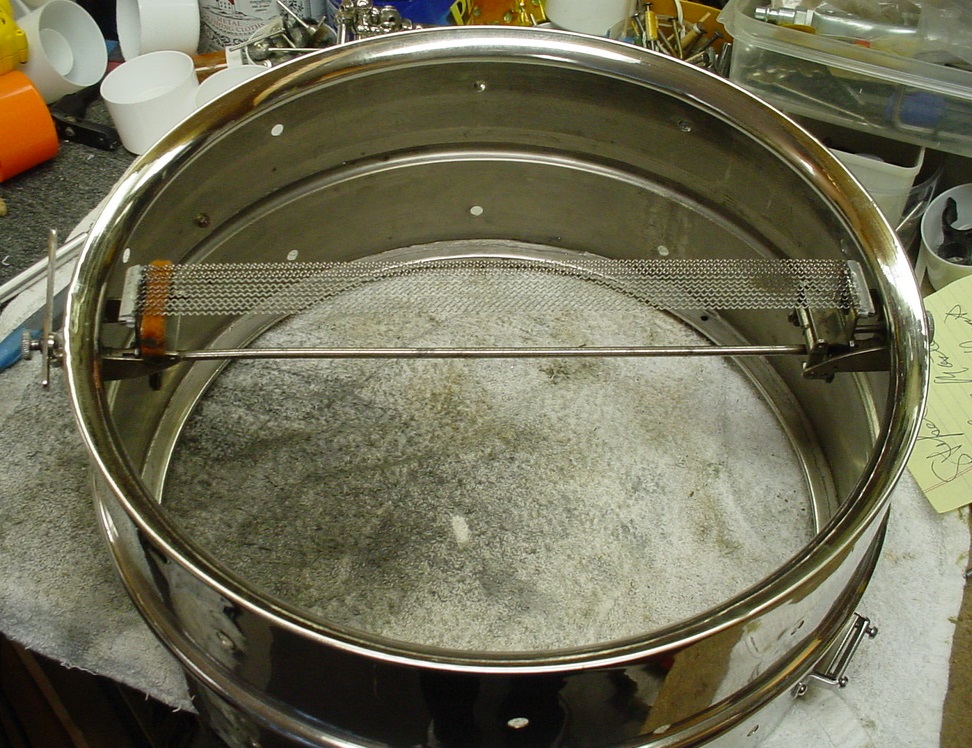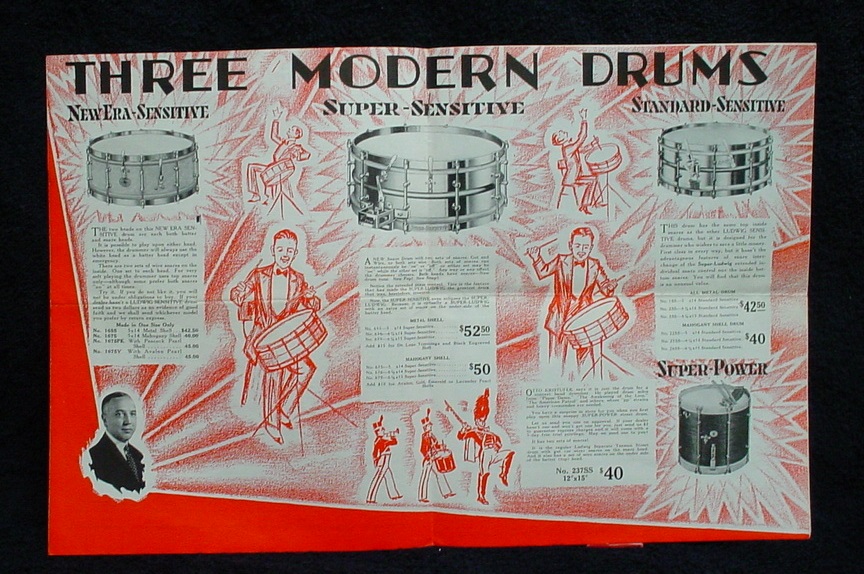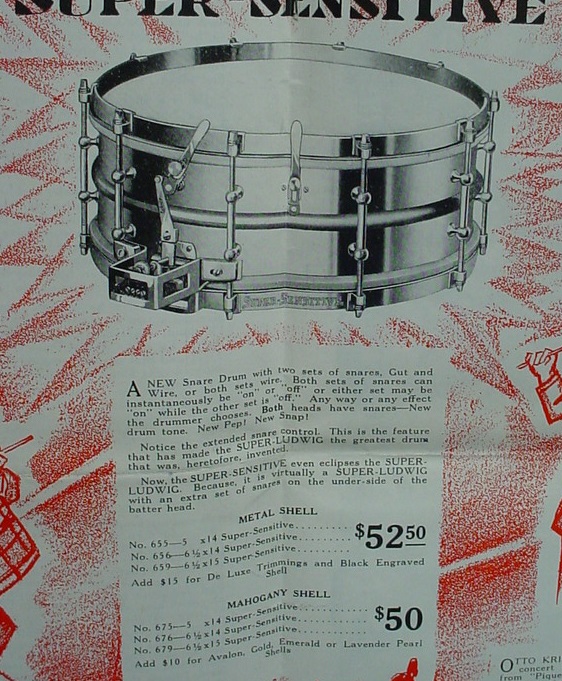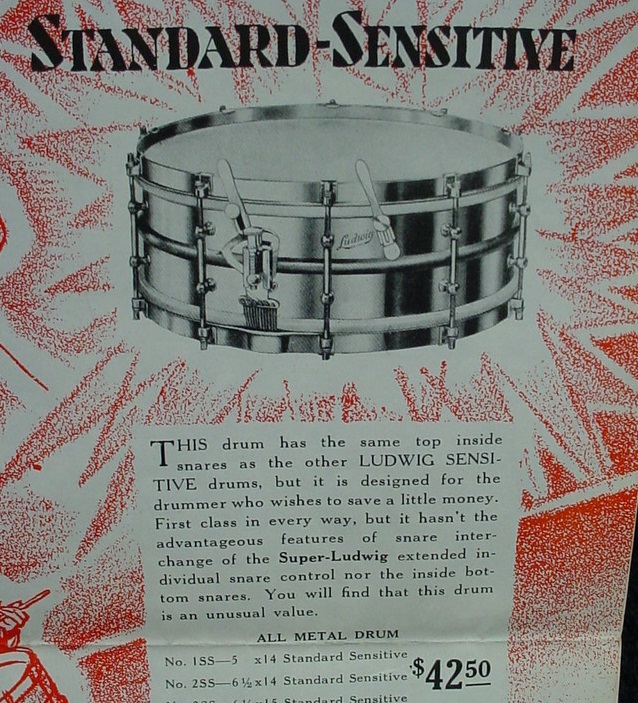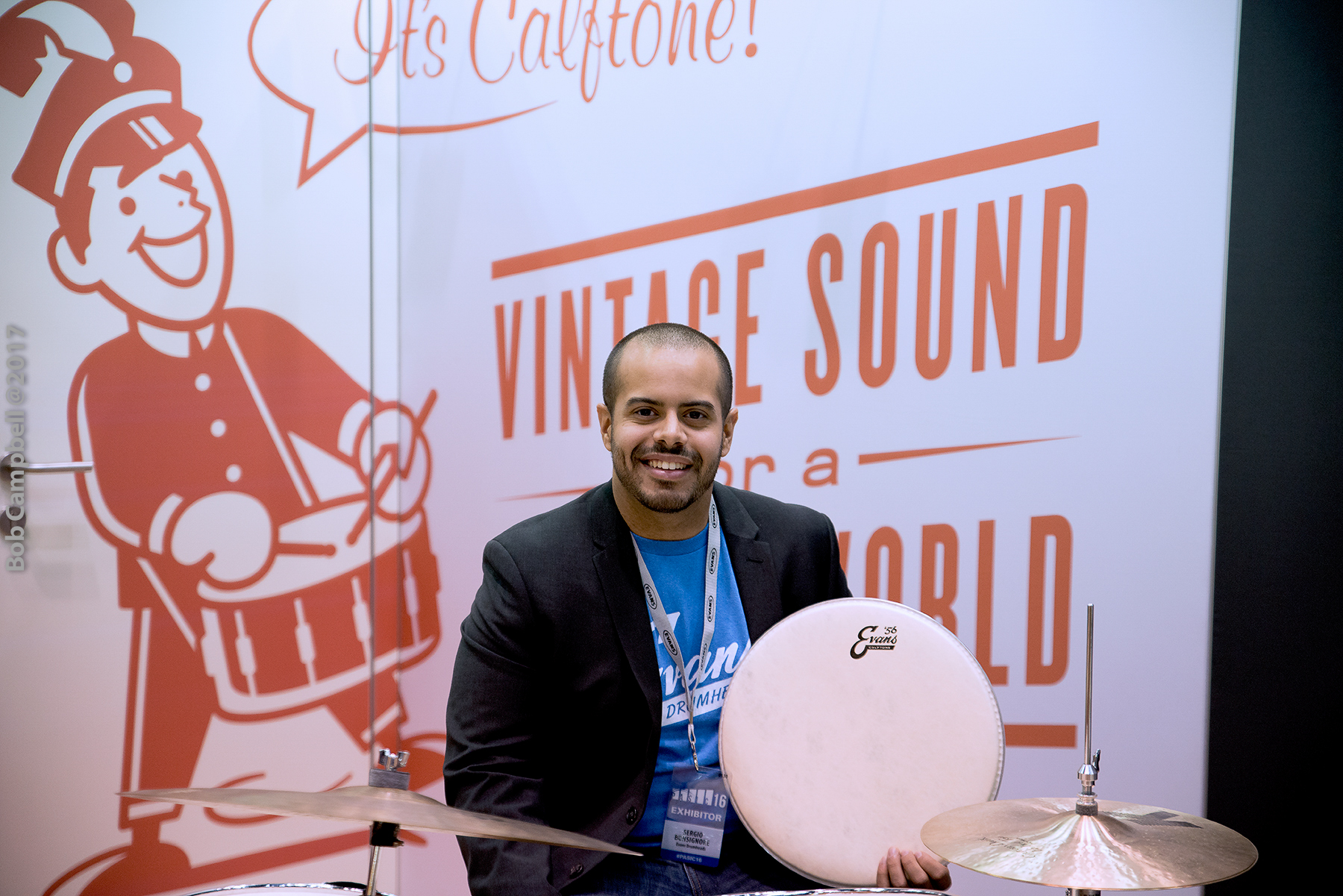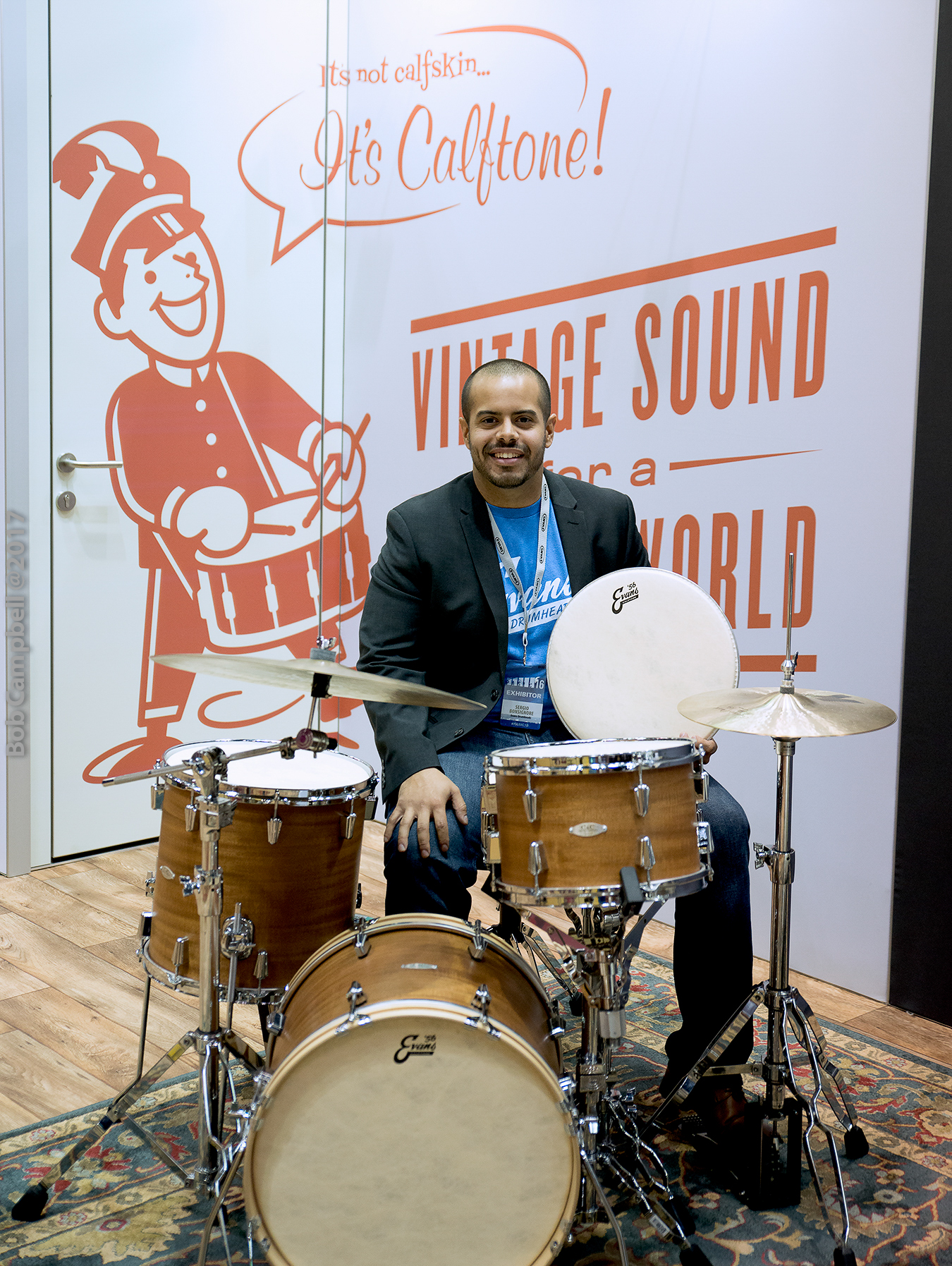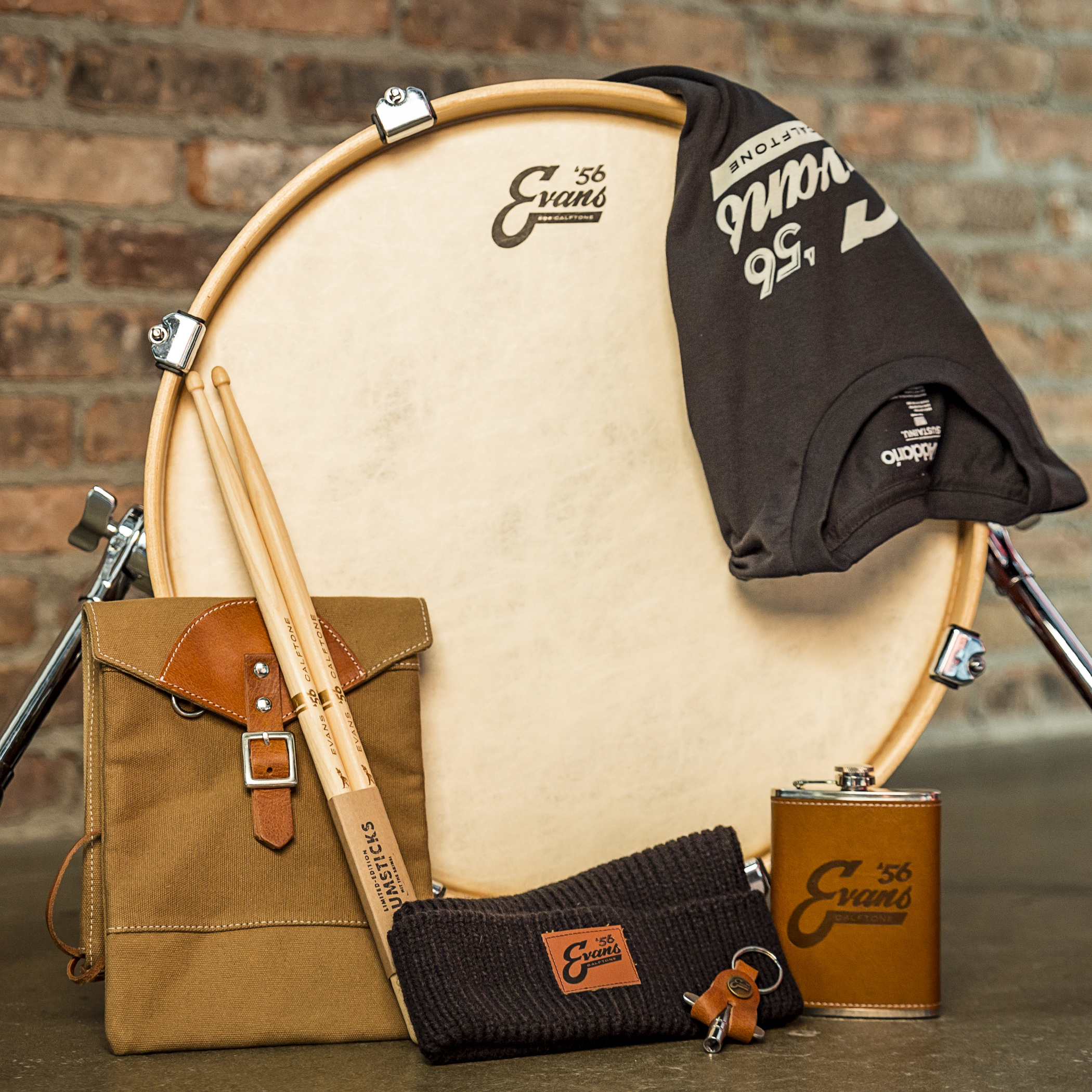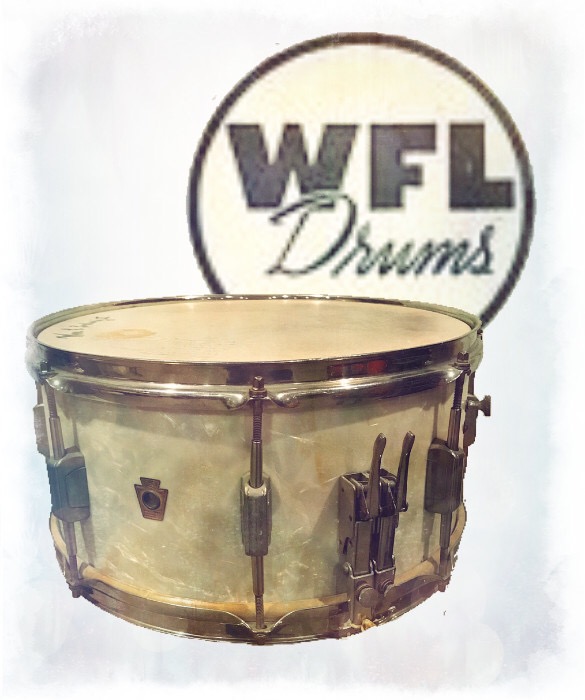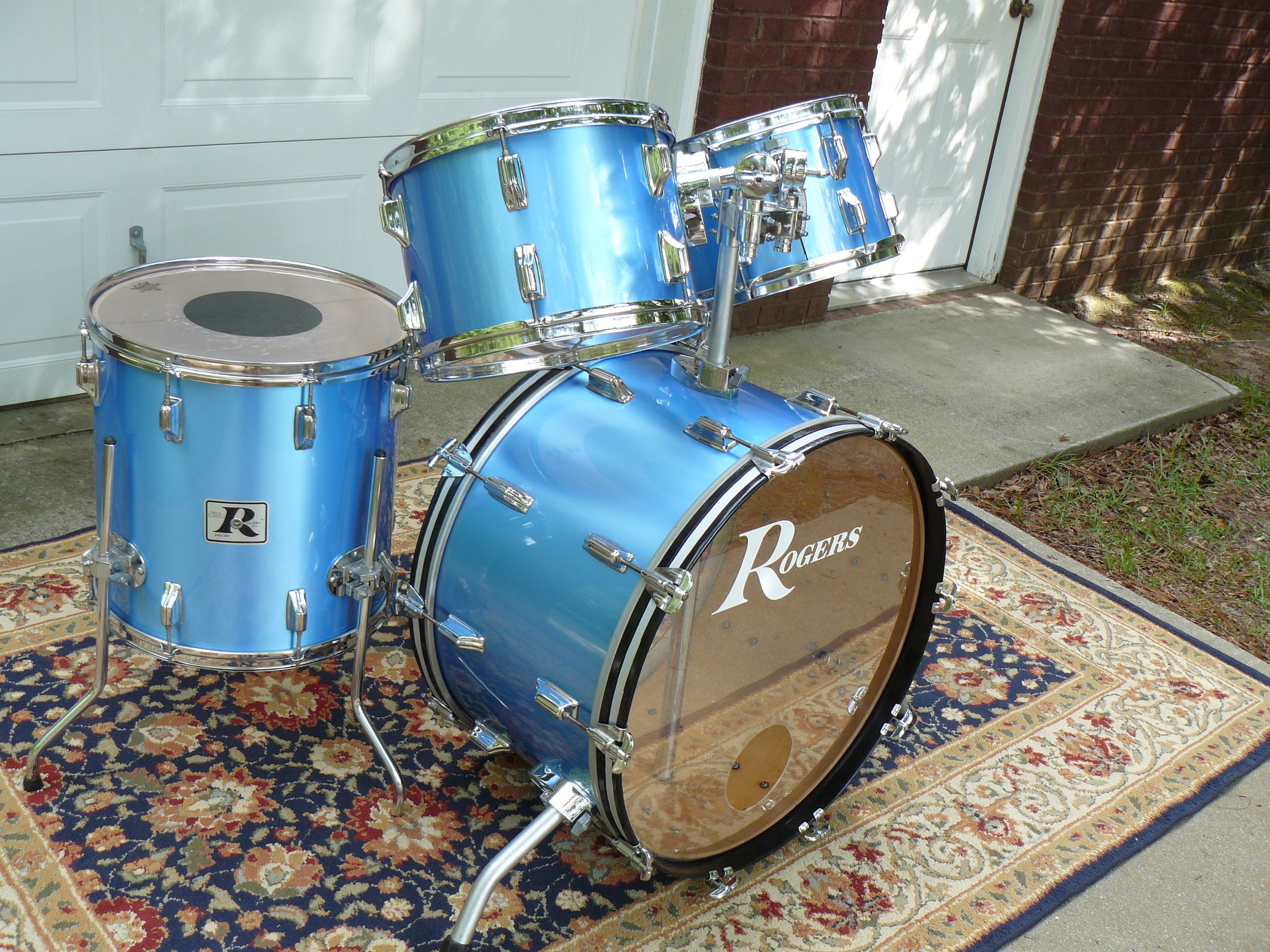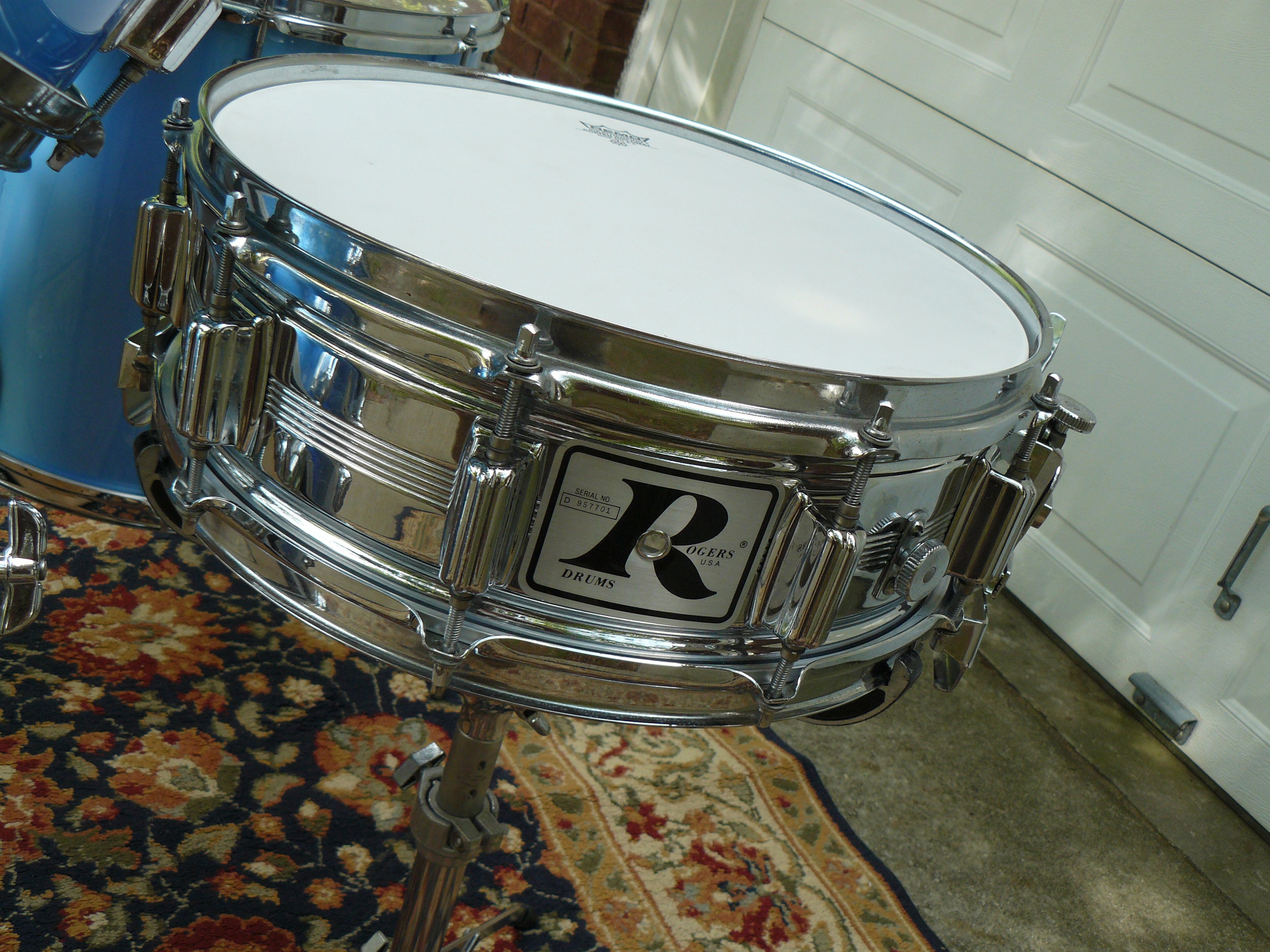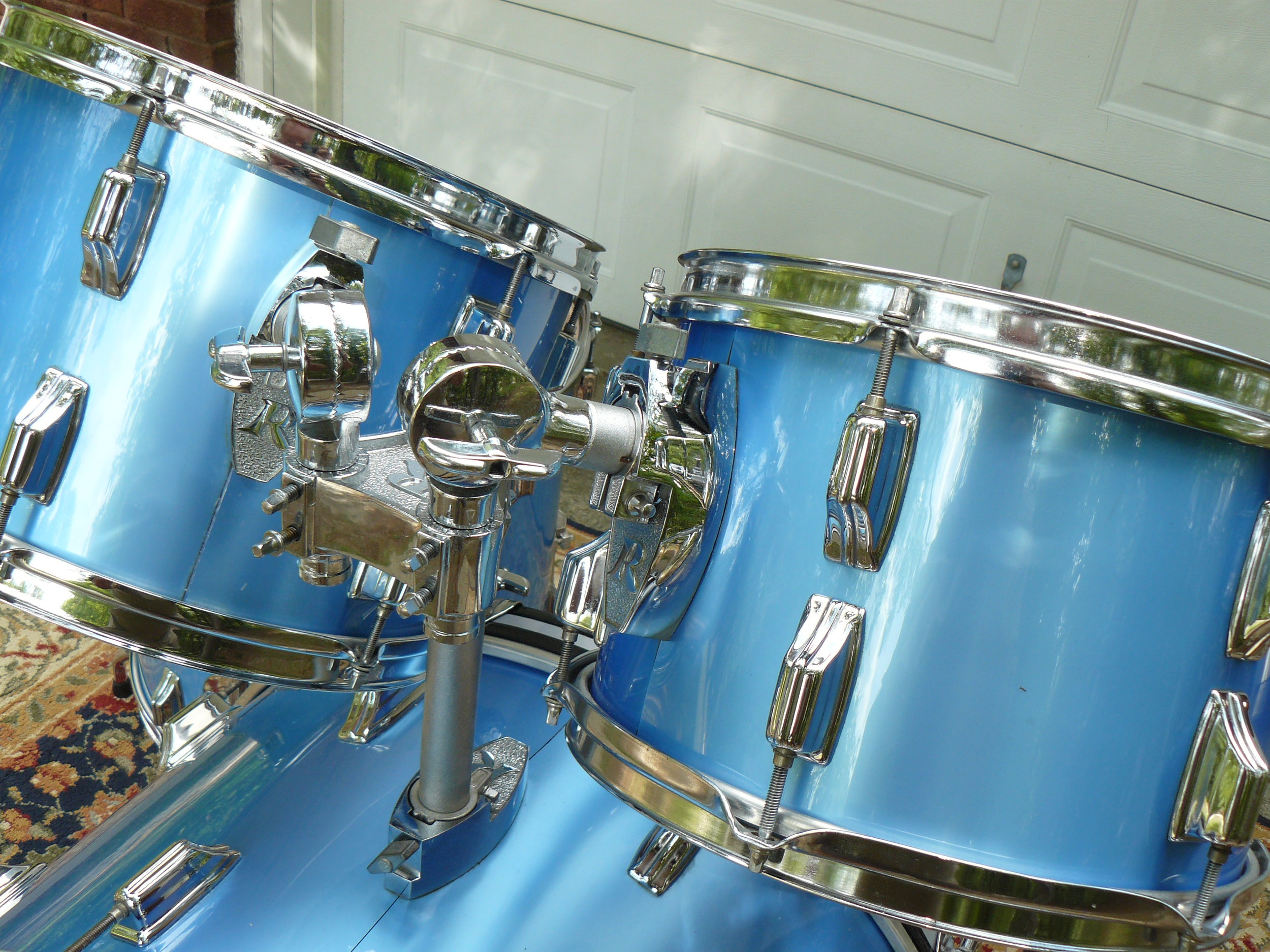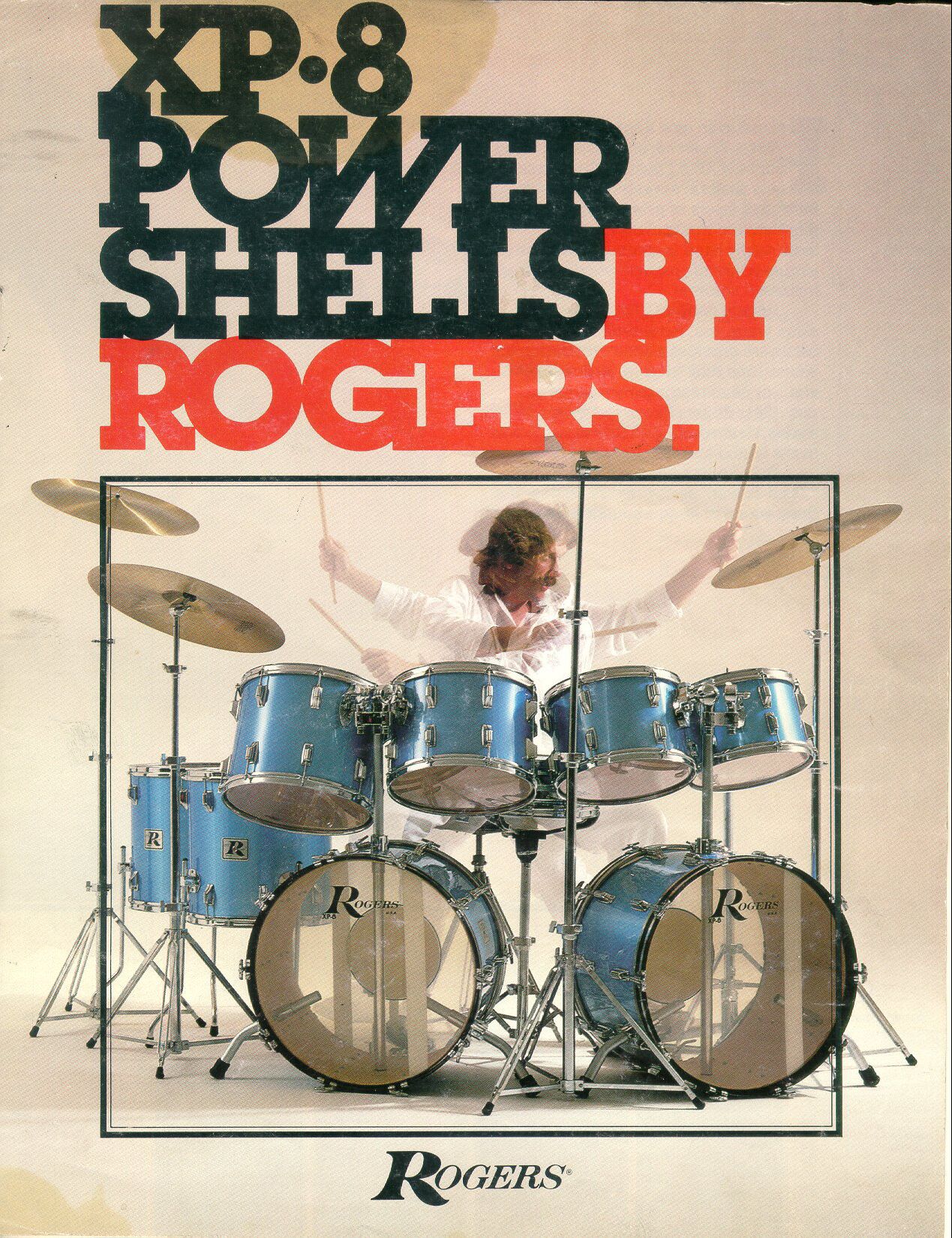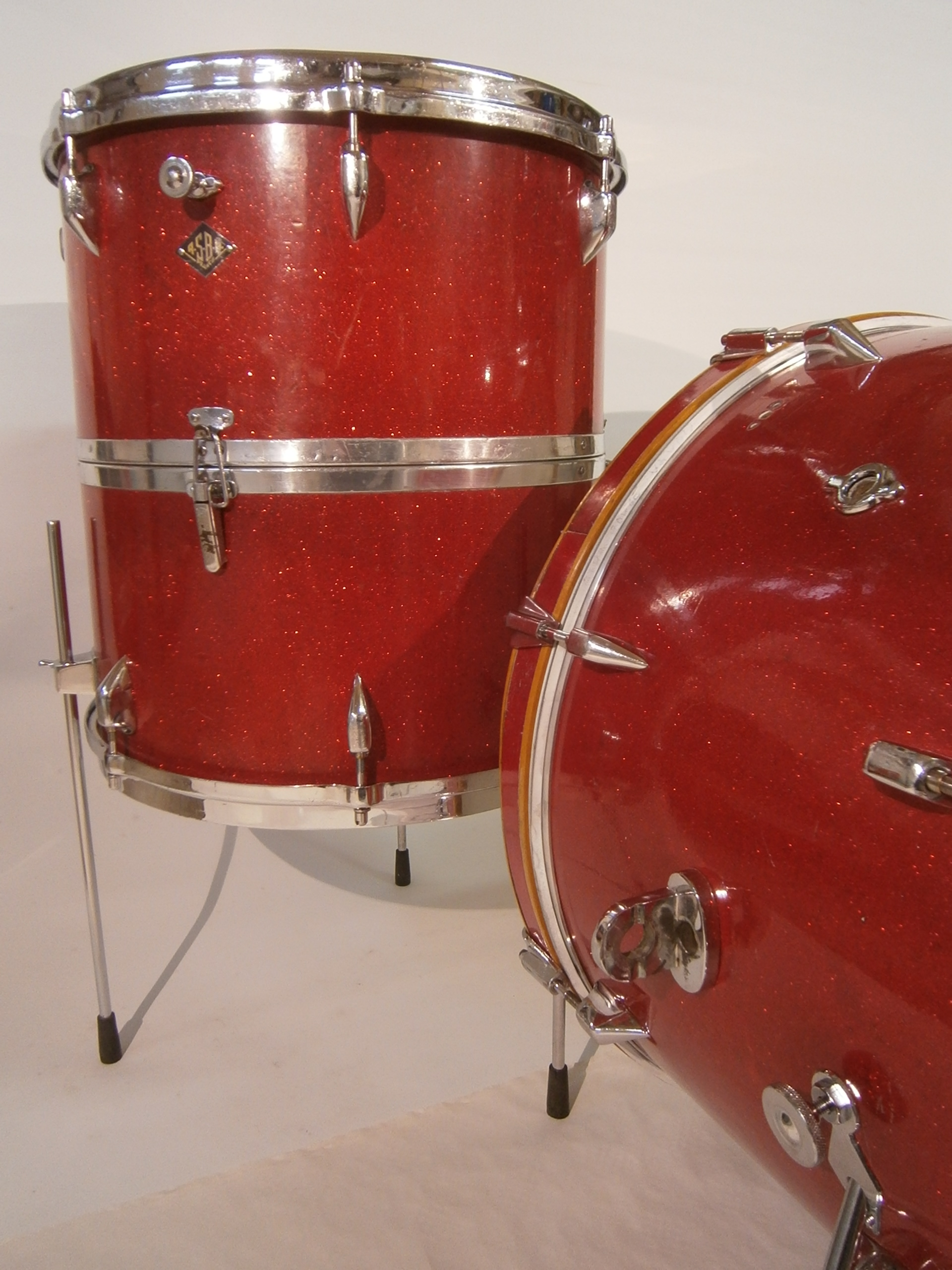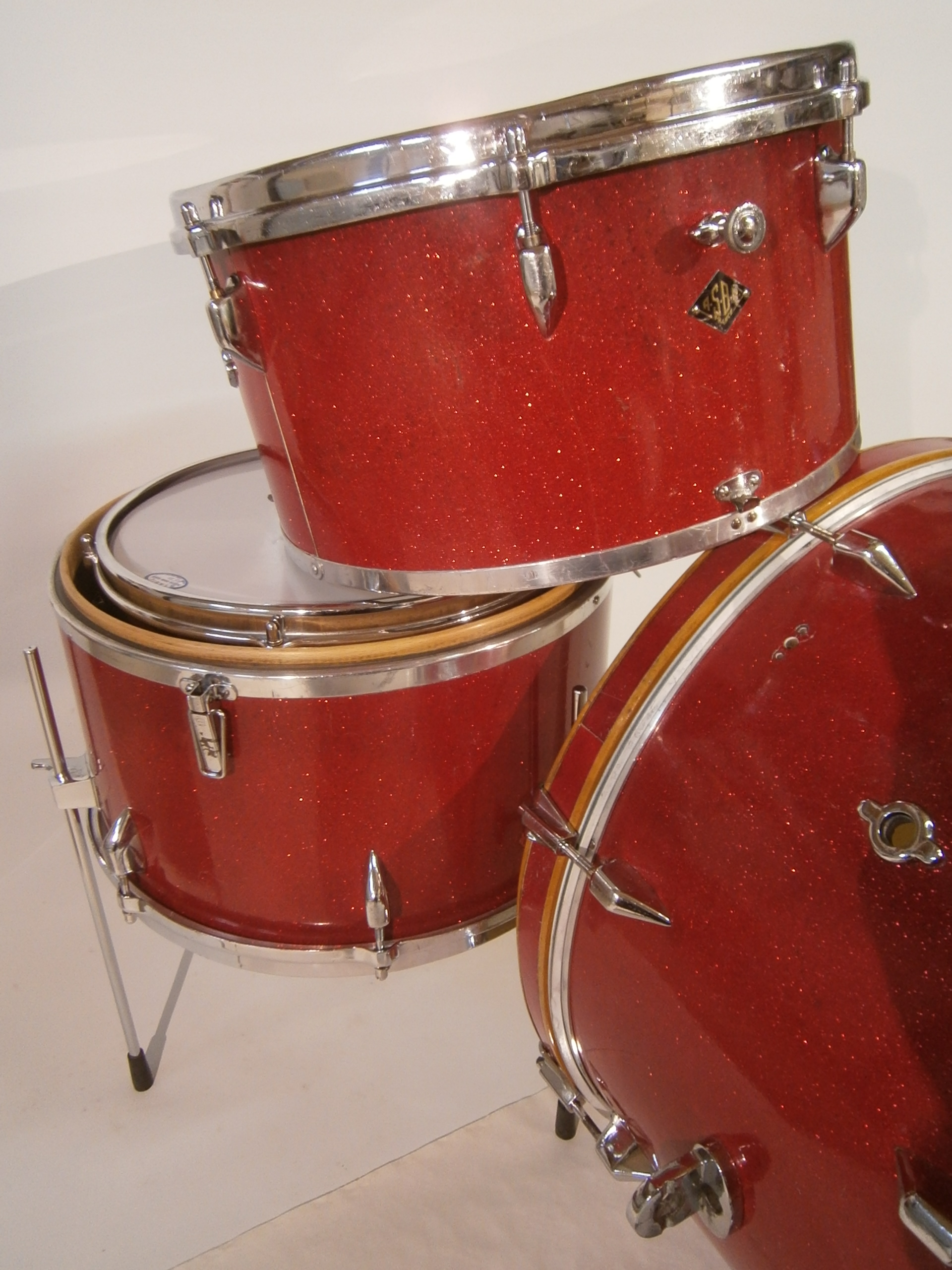MICKEY ROKER (1932 - 2017)
Philadelphia native, Mickey Roker lost his battle with cancer and diabetes at the age of 84. Granville William Roker, Jr. was born in Miami, Florida on September 3, 1932. The hard driving drummer with a heart of gold is now in Jazz Heaven. His over forty-year reign on the music scene is legendary.
Mickey worked with some of the finest musicians in the business…Including Benny Carter, Dizzy Gillespie, Herbie Hancock, Milt Jackson, Sonny Rollins, Stanley Turrentine, The Modern Jazz Quartet, Nancy Wilson, Lee Morgan and numerous others.
Read moreLucas Aldridge and I finally got our hands on some Felt Tone Heads from Remo and they are the bomb. We put the FiberSkyn on the batter side and the hazy on the front, and used matching regular heads for comparison. Felts have been attached/glued to heads before. The difference here is that the felt is NOT adhered to the head but adhered to the plastic strip which holds it against the head. This plastic strip also continues on around the circumference of the head acting as a very narrow "zero Ring" similar to the Power Stroke heads.
Read moreIn 1929 Ludwig & Ludwig offered four new snare drum models that can be found in the Fall 1929 Ludwig Drummer Magazine. The new models were the Super-Sensitive, New Era-Sensitive, Super-Power and the Standard-Sensitive Model, the drum in this article. From what I have researched it looks like the Super-Sensitive Model was around from 1929 through 1936, whereas the New Era-Sensitive, Super-Power and Standard-Sensitive Models only lasted for 1-2 years (1929-30). Super-Sensitive Models are very collectible and somewhat rare in certain instances but the other three Sensitive Models are extremely rare and, in my opinion, highly collectible.
Read moreRick Smith’s annual vintage and custom drum show at The Sphinx Shriners Center in Newington , Connecticut was another huge success. On Sunday, April 23, 2017, a very large crowd of drummers and percussion enthusiasts were enjoying the standing room only clinics in the large auditorium by Joe Corsello, Adam Nussbaum, and Mark Schulman. While many others were busy checking out the two floors of over 40 dealers in the adjacent building.
Read more"Somebody just reminded me of when I used to work with Oscar Brown Jr. He wanted fair treatment for all people knowing full well who was getting shafted the most, and of course this was his biggest concern. However he was inclusive when it came to brotherly love I can tell you that! He also knew how to play the stock market… On a side note he gave me a few good tips, and I made a little extra taste!"
Read moreI am always trying different heads on my modern and vintage snares, as this adds to the sound palette of each drum. I put a set of the Evans ’56 Calftone heads on my late 1990’s birch Premier Genista 5-piece kit (my primary gigging set-up)…and was not disappointed. It was like playing calfskin, but with a bit more focus, response and attack. I especially loved the low frequencies that came out of my 22” bass drum (EMAD Calftone) and 16” floor tom. I also put a 14” Evans ’56 Calftone on one of my 5 X 14”, 1920’s scroll-engraved Ludwig Black Beauties. I often get uneven responses across an old calfskin head. This was not the case with the Calftone; it was very consistent and sounded quite warm. So overall, I’m really digging these heads.
Read moreThere are many great examples of Twin Strainer drums left in the world but the parts are extremely hard to find. WFL continued to offer many of the parts as replacements up until the early 50s but most of those drums then were considered dinosaurs compared to the current offerings. Finding the strainers is probably the toughest part as there is a right and left half of each version, chrome or nickel version, and a smaller size version for 5.5x14 drums. The second version of the throw-offs also have very fragile tips and many a drum can be found with the strainer tips broken off. Most of the drums were also outfitted with a 10 strand set of snares for one side and a set of six silk wound snares for the other side. Occasionally I have seen drums with gut snares as an option as well. Many of the twin snares I have come across are missing either one or both sets of snares and they can also be very hard to replace. Lots of things in the drumming world have changed since the late 30s/early 40s but these Twin Strainer drums bring a look, sound and a design that comes from an era of great invention. There are many great examples of Twin Strainer drums left in the world but the parts are extremely hard to find. WFL continued to offer many of the parts as replacements up until the early 50s but most of those drums then were considered dinosaurs compared to the current offerings. Finding the strainers is probably the toughest part as there is a right and left half of each version, chrome or nickel version, and a smaller size version for 5.5x14 drums. The second version of the throw-offs also have very fragile tips and many a drum can be found with the strainer tips broken off. Most of the drums were also outfitted with a 10 strand set of snares for one side and a set of six silk wound snares for the other side. Occasionally I have seen drums with gut snares as an option as well. Many of the twin snares I have come across are missing either one or both sets of snares and they can also be very hard to replace. Lots of things in the drumming world have changed since the late 30s/early 40s but these Twin Strainer drums bring a look, sound and a design that comes from an era of great invention.
Read moreMy featured drum set this month is a Rogers Big R Londoner 5 set from the 1980s. It has all maple 8 ply shells with clear interiors and no reinforcement rings. These drums were called XP-8 series because of the shells. I copied the following information from a Rogers discussion forum, "XP-8s have 8-ply rock maple shells and were made from 1979 up until the demise of Rogers in 1984. They're excellent quality and comparable to modern day DWs but can be had at a fraction of the cost. The Memriloc hardware is strong and sturdy and ensures that they'll set up exactly the same every time - a real time saver. These sets are battleship tough and built to last. XP-8s are some of the best drums Rogers ever produced."
Read moreBuddy. One word says it all. Icon, household name, a celebrity with a comics wit, a virtuoso unequaled. He was a force of nature to behold. He commanded the best out of his musicians because every time he sat down behind the kit he was the best in the world. Quite simply, no one drove a big band like he did. Beyond his soul shattering technique, it was just the time feel—the drive that he had that was like nobody else. His time felt like a cigarette boat with the front end hiked up in the air cruising on the water at a ferocious speed. At the same time utmost musically always prevailed and he could be just as sensitive too. His astonishing brush playing clearly demonstrated this.
Read moreSome of the patterns have been around for a thousand years or more. Most of them are a few hundred years old at least. The drum set itself, barely a hundred years old, came along long after the rudiments were laid down. Well, if the rudiments were never intended for drum set use, does it even make sense to drag them into the drum set arena?Some of the patterns have been around for a thousand years or more. Most of them are a few hundred years old at least. The drum set itself, barely a hundred years old, came along long after the rudiments were laid down. Well, if the rudiments were never intended for drum set use, does it even make sense to drag them into the drum set arena?
Read moreI will say this: if Buddy could have read music he may have enjoyed staying in one place and making big money while staying in town (NY or LA) and being the house drummer for one of those late night tv shows. But (lucky for us) he had to move his band around a lot to keep it working all the time. This gave everybody, everywhere a chance to hear and enjoy Buddy Rich. (...and then again he probably wouldn’t have had it any other way)
Read moreDyna-Sonic serial number 1171. This drum was offered on the Rogers Drums Group II Facebook page. Condition was utterly deplorable. The shell was covered in grime, many years worth of grime. It displayed the absolute worst in neglect. It was however, fairly complete. The frame, of course was long gone. The tension rods were mostly a mix of unknowns that were themselves thirty to forty years old. The heads on the drum, I am pretty sure, were 70s era Remo. This drum had not been played for decadesDyna-Sonic serial number 1171. This drum was offered on the Rogers Drums Group II Facebook page. Condition was utterly deplorable. The shell was covered in grime, many years worth of grime. It displayed the absolute worst in neglect. It was however, fairly complete. The frame, of course was long gone. The tension rods were mostly a mix of unknowns that were themselves thirty to forty years old. The heads on the drum, I am pretty sure, were 70s era Remo. This drum had not been played for decades
Read moreSo you think that state-of-the-art rack system you emptied your bank account for firmly puts you among the pinnacle of 22nd Century Drummers, right? After all, it is equipped with a remote cable Hi Hat, so it's the “Latest and Greatest.” Would you believe your great grandfather, the guy you got those drummin' genes from, beat you to the punch by nearly a hundred years?
Read moreThis brand was created in 1928 by Alfred and Simone BOUDARD. Pre-war, ASBA produced accessories for musical instruments (music stand, trumpet mute, instruments stand, etc...). It was only after WWII that ASBA began to produce drums and percussions and eventually became internationally successful !
Read morePeter Erskine on why he uses the Powerstroke 3 Felt Tone Drumhead The Powerstroke® P3 Felt Tone™ Bass Drumheads incorporate the traditional style of dampening a bass drum with a strip of felt into an easy to install all inclusive Drumhead.
Read moreI will be exhibiting and also giving lessons in booth 175 on the second level of the 2017 Chicago Drum Show, May 20 & 21.
Read moreMy doctor put me on a new drug that actually made me a bit stoned for the first few days. I was prepared for this and planned my days accordingly. What I didn't realize was how it would affect my playing. Being a little bit high (from whatever cause) can help you get into the music. Best case is to be high on the music alone. Less desirable is to be in enough of a fog to forget to pay attention to, for example, the guitar player trying to catch my eye because he wants to end the tune.
Read more




